“Arguably the most compelling aspect of the wines of Vouvray, and the various styles being made, is that you truly can go through the entire meal pairing your multitude of courses with just this one, intriguing appellation,” writes Turner.
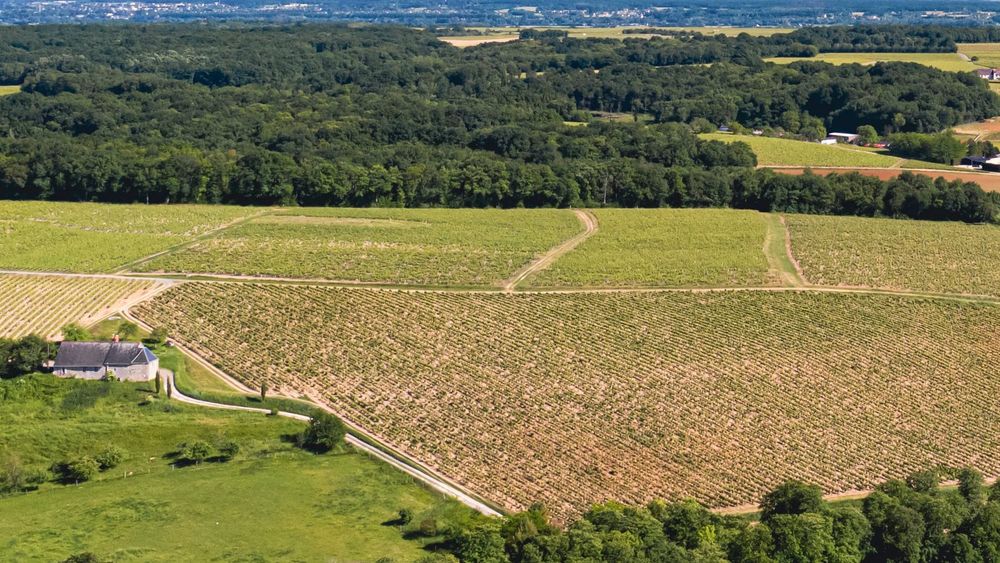
The region itself sits on the north bank of the Loire Valley just to the east of the city of Tours.
When you think of the wines of the Loire Valley, UK wine drinkers tend to remember the 1980s boom of Muscadet, or Sancerre. These appellations, however, are nearly the perfect bookends to this long winding track of the Loire River valley, stretching from the North East coast near the city of Nantes all the way to Orléans in the southern shadow of Paris. Between these regions lie a plethora of fabulous wine regions, producing some of the world’s most iconic Cabernet Franc, Sauvignon Blanc and Chenin Blanc wines and many more.
Chenin Blanc, in particular, rules supreme for the white wines of the Touraine and Anjou-Saumur vineyards. A nudge inland from the coast, the valley brings the maritime climate a little further inland, leaving a long, sunny but cool wine growing season allowing the grapes to develop a range of subtle and perfectly formed flavours. The high natural acidity of the grape gives many options, from fine traditional method sparkling wines, all the way to lusciously noble rot sweet wines. Increasing numbers of high quality dry, white wines are gaining an increasing following, impressing wine critics and consumers the world over, and few appellations can match the quality of the unique vineyards of Vouvray.
What do we know about Vouvray
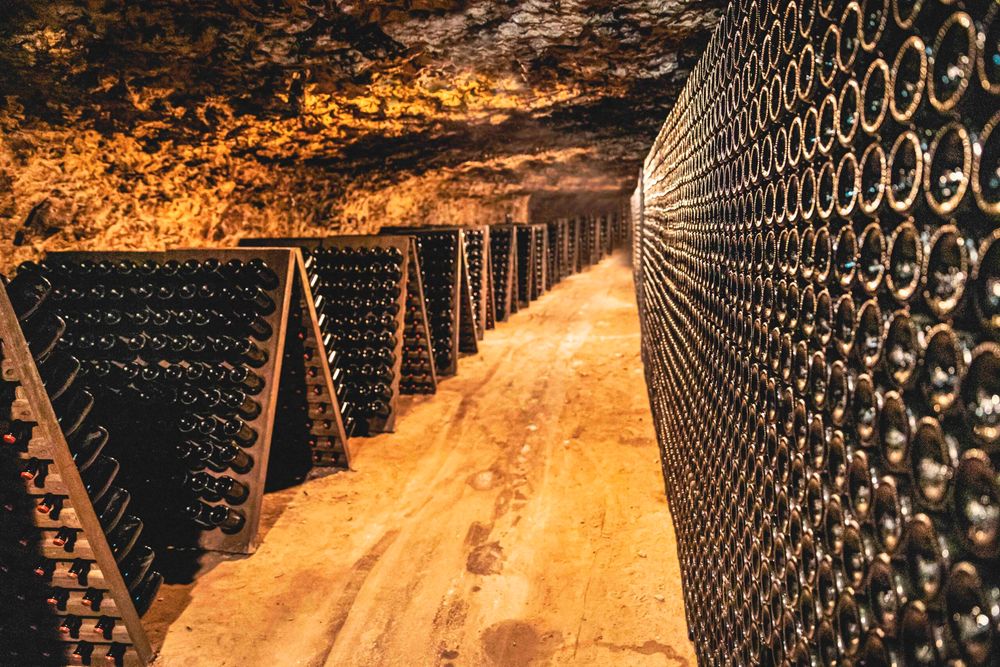
The underground ageing cellars of Vouvray
Vouvray AOC was established in 1936, the earliest year of the newly launched appellation system in France. It boasts the most easterly Chenin Blanc vineyards of the Loire Valley, with the grapes growing under a confluence of the inland continental climate of the likes of Sancerre to the East, and the strongly maritime climate of Muscadet to the West. The presence of the Loire River also contributes a moderating factor, allowing for long, even temperature growing seasons. This allows for a range of styles, as well as fine wines to be produced that reflect the varying vintage expressions, giving plenty for us wine lovers to admire and discuss or simply drink and enjoy.
The natural acidity of Chenin Blanc lends itself to early-harvested grapes for sparkling wines, left on the vines for late-harvest demi-secs or noble rot sweet wines, or simply harvested and vinified into some of the finest dry white wines in the world. The total production of around 15.7 million bottles has, in fact, a nearly 50:50 split between sparkling and still wines, reflecting the versatility of Chenin Blanc.
The region itself sits on the north bank of the Loire Valley just to the east of the city of Tours. A little over 17km west to east and around 4km north to south, the sloped banks overlooking the river form a perfect position for the Chenin Blanc vines. The southern facing aspect and reflections from the water surface gift the perfect sun exposure for full ripeness. Vouvray’s vineyards lie, for the most part, on the prized tuffeaubedrock; a soft, fine-grained limestone that allows the vines to grow deep roots into the earth to search for water and nutrients and capable of highly expressive terroir. The top-soils of clay-limestone and clay-siliceous soils offer great drainage and, when added to crops of gravel, stone, and flint across the varying plots, you have the ingredients for a wide range of wine styles, complexity and flavour profiles.
Protecting the vineyards of Vouvray
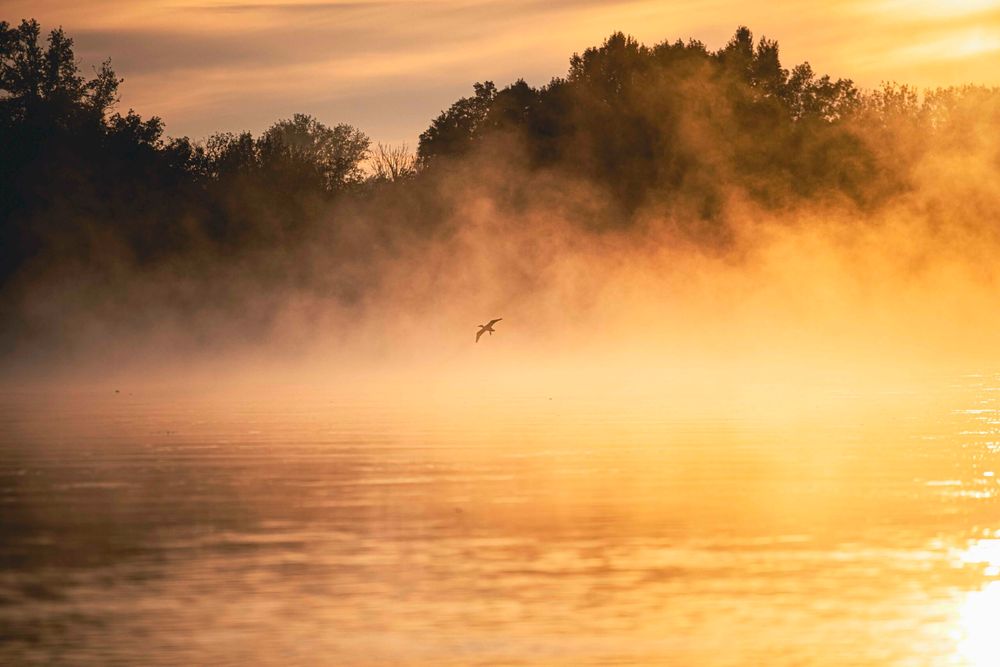
Francois Bouteille, current manager of AOC Vouvray, was recently in London to preside over a tasting and food pairing evening to showcase the versatility of the wines and winemakers of the region. He was quick to stress the importance that the grape growers place on protecting the terroir of this unique area. “We are taking many steps as a collective to move towards a regenerative farming model,” noted Bouteille. “We have already proclaimed that the presence of grass between the rows is mandatory throughout the vineyard and are helping and encouraging farmers towards gaining HVE (Haute Valeur Environmental) certification.”
Bouteille went on to state that Vouvray already boasts 30% of all vineyards being either organic or in organic conversion. “Many people think of the Loire Valley as a place where it is difficult to be organic,” noted Bouteille, “but we believe we’ll hit 40% of vineyards either certified or in conversion within the next five years.” Indeed, all but one of the 14 wines we tasted throughout the evening had at least one environmental or sustainability certification highlighting the evident desire of producers to protect their natural legacy for generations to come.
Winemaker choices and styles
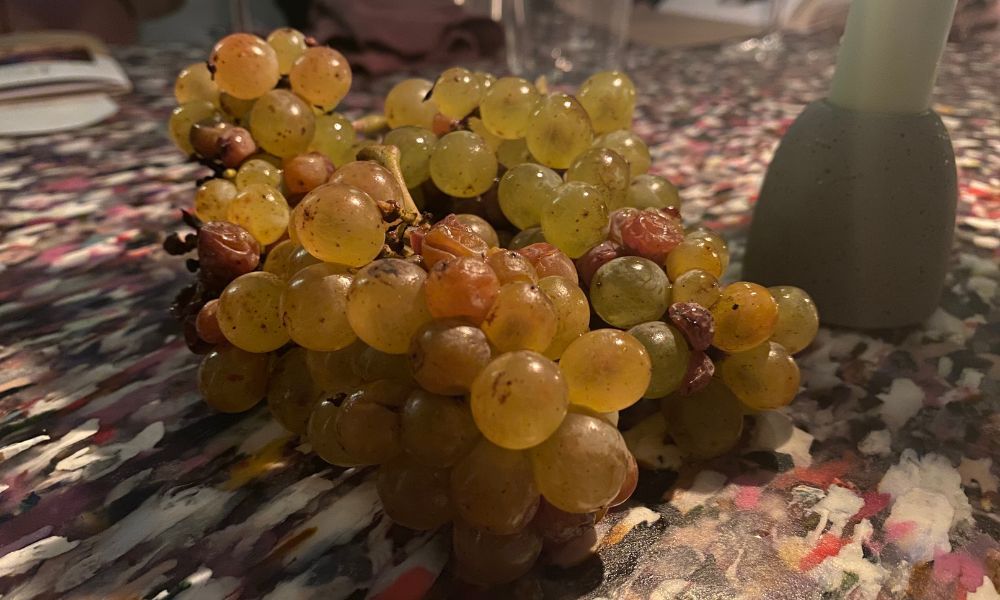
Smuggled grapes from Vouvray
The first major choice facing the growers is at harvest time. Chenin Blanc’s naturally high acidity allows for a range of hang times for the grapes, which can produce very different flavours and structures. Alongside Bouteille, we were treated to the company of Ingrid Petrus, business partner of 3rd generation winemaker, Damien Pinon. She had recently finished her harvest and had smuggled a recently picked bunch of Chenin Blanc in her luggage for us all to see. The mixture of fat, juicy and fresh grapes alongside dried, raisined fruit on the same bunch went to prove the point, that harvest dates are all important. “The big issue in most of the Loire Valley is waiting for grape ripeness before the autumn rains come,” revealed Pinon. “Vouvray has warmer soils than most areas, so ripeness happens more consistently and we have more options.”
Once the grapes have made it to the winery, the winemaker then has a wide range of styles from which to choose. Many fermented and age in stainless steel, but Chenin Blanc can lend itself to oak ageing admirably. The high natural acidity can be retained and utilised in sparkling or sweet wines, or indeed the wine can be subject to malolactic conversion for extra body and complexity.
“The best thing about Vouvray is that everyone can find something that they love,” beamed Pinon. “We have such a diversity of styles, all achieving high quality levels, that you really can choose a Vouvray for all seasons and right throughout all meals. This is why we love our Chenin so much, you simply can’t do all this with Sauvignon Blanc.”
The range of styles has given rise to a criticism of Vouvray. How are consumers meant to know the style of each wine by looking at a label that simply states “Vouvray AOC”? These wines, however, aren’t for supermarket shelves. These are for wine lovers that shop at independent wine stores and want the hand sell from those in the know. They’re for restaurants that build interesting, considered lists for their regulars to enjoy. These are wines for consumers that are keen to explore.
Food pairing
Arguably the most compelling aspect of the wines of Vouvray, and the various styles being made, is that you truly can go through the entire meal pairing your multitude of courses with just this one, intriguing appellation. The high, natural acidity, the range of sweetness levels, and the winemaking options giving rise to different structures, aromas and mouthfeel mean that chefs and diners can have a lot of fun.
We were lucky enough to join Bouteille and Pinon at the fabulous Silo restaurant in Hackney Wick in London. The wines were picked to reflect the typical retail price points available in the UK of between £8 and £45, with most of the still wines between £10 and £20. Here is just a small selection of my favourite wines and food pairings from the evening:
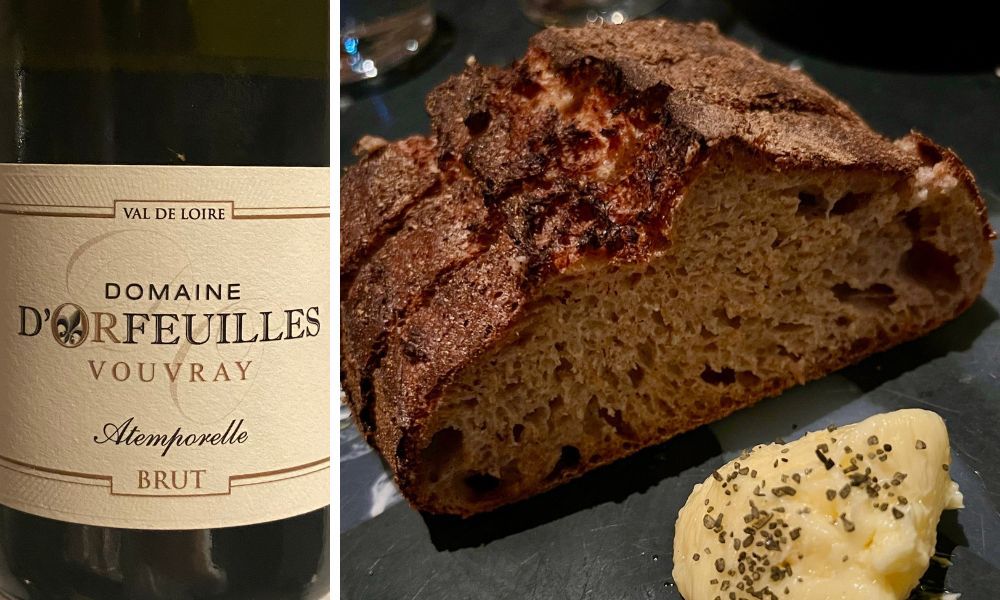
Domaine Vincent Gaudreau 2018
Style: Sparkling Vouvray
Served with SILOaf and butter
Vincent Gaudreau is celebrating 20 years at the helm of his family’s winery, originally begun by his gran father in 1955. This wine uses fruit from 45-year-old vines, planted on clay and limestone soils. The bubbles arrive through the traditional method with 48 months of autolytic ageing. Lovely soft bubbles, with lifting stone and citrus fruits, the 4 years on the lees has left a fabulously smooth mouthfeel but the autolytic notes are still really subtle. Worked beautifully with that wonderfully crafted bread and butter. HVE Level 3 certified.
Not currently imported

Domaine d’Orfeuilles, ‘Atemporelle’ NV, Organic
Style: Sparkling Vouvray
Served with SILOaf and butter
Fine sparkling wine from 20 hectares around Chançay and Reugny. The winery, run by father and son Bernard and Arnaud Herivault, is built in the outhouse of a medieval castle that has long since fallen into disrepair. 40-year-old vines grown on a mix of clay-limestone and clay-siliceous soils. Sparkling wine made in the traditional method, with 36 months of autolytic ageing and residual sugar of just 2g/l. Green fruit, stone fruit, lemon sage, fresh lemon juice, smoke, toast and white pepper. Some of the older sparklings we got to try had already developed honey and even more toast, but maybe it was the mood I was in, I was a big fan of the younger style on the night. Chenin Blanc sparkling wines always seem to give you a lovely mouth filling texture, which was a true marker in this wine.
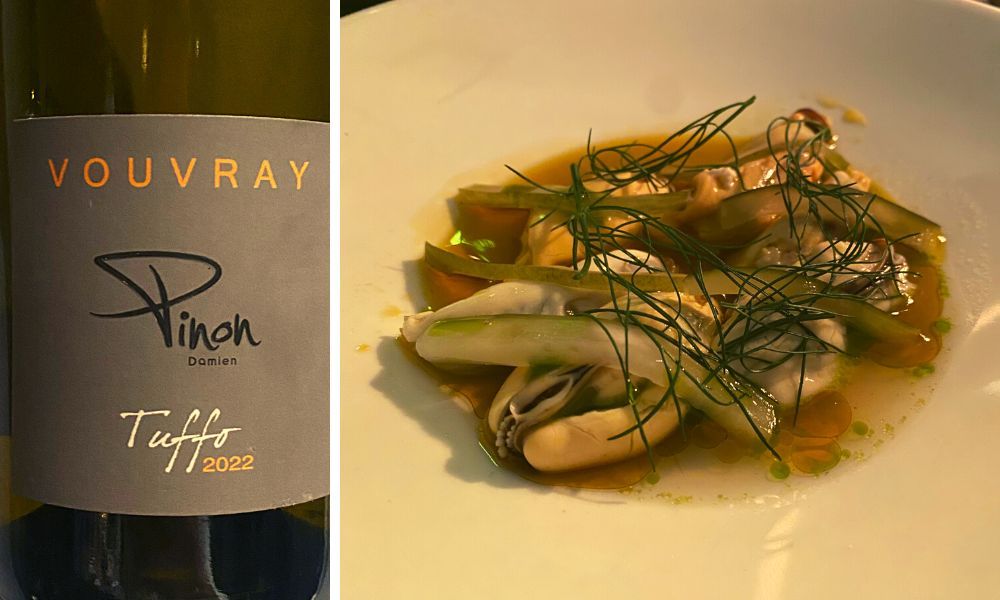
Domaine Damien Pinon, Tuffo, 2022
Style: Dry Vouvray
Served with mussels, cucumber and fennel
3rd generation winemaker, Damien Pinon, is currently in organic conversion with his 29 hectares planted across clay-limestone soils. Lots of minerality and texture from the limestone bedrock. Low temperature fermentation of 14°C with natural yeasts. The aim is to pick the healthiest grapes possible and then do less work in the winery. More subtle style of Chenin Blanc, still with those rich acacia and herbal aromatics, but also with true maritime salinity matching the ripe stone fruit and excellent acidity throughout. Currently in organic conversion.
Currently imported by Graft Wines
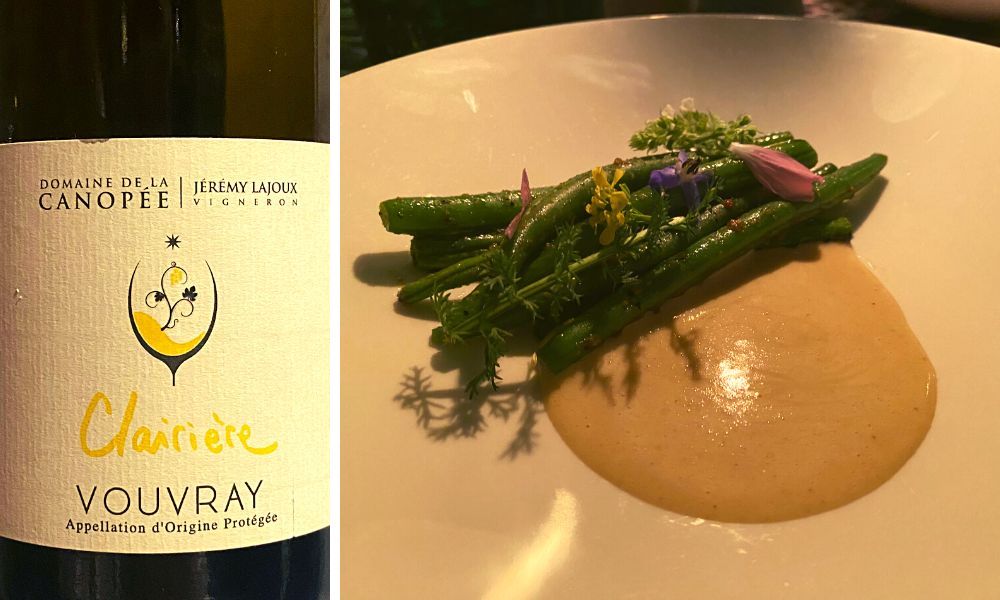
Domaine de la Canopée, Clairière 2022
Style: Dry Vouvray
Served with green beans, vadoucan, dashi beurre blanc
Current head winemaker Jérémy Lajoux has come in from a non-wine family, full of the joy and passion for working with nature. He began at 15 years old at Domaine Vincent Carême, and has stayed in Vouvray as one of the true specialists of the region. 30-60 year old vines planted on very stony ground, low intervention winemaking, 7 months of ageing in concrete vats. Only 1.2g/l residual sugar, much more lightness, herbal, green fruit notes, crisp mineral feel on the mouth, should age beautifully. Currently in organic conversion.
Not currently imported
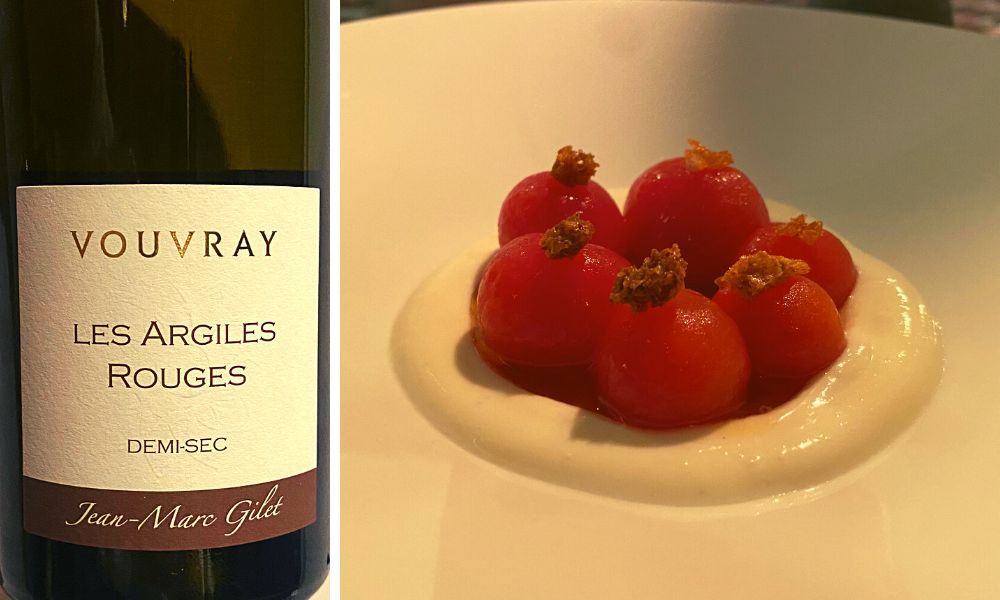
Domaine de la Rouletière, Les Argiles Rouges, 2022
Style: Demi-Sec Vouvray
Served with Tomato, Smoked Yoghurt and Venison Garum
From a fifth generation Domaine with 30-40-year-old vines on clay-limestone soils. 80% of the wine fermented in stainless steel, 20% in oak barrels, then blended and aged on the lees for six months. Lots of smoke, green fruit, lemon citrus and apricot which opened up to a long, subtle finish with building stone and tropical notes. The interplay of the acidity and the lees ageing balanced beautifully with the residual sugar of 22g/l. Truly beautiful with the smoky and sweet tomato dish. Certified organic.
Currently imported by Hallgarten Wines
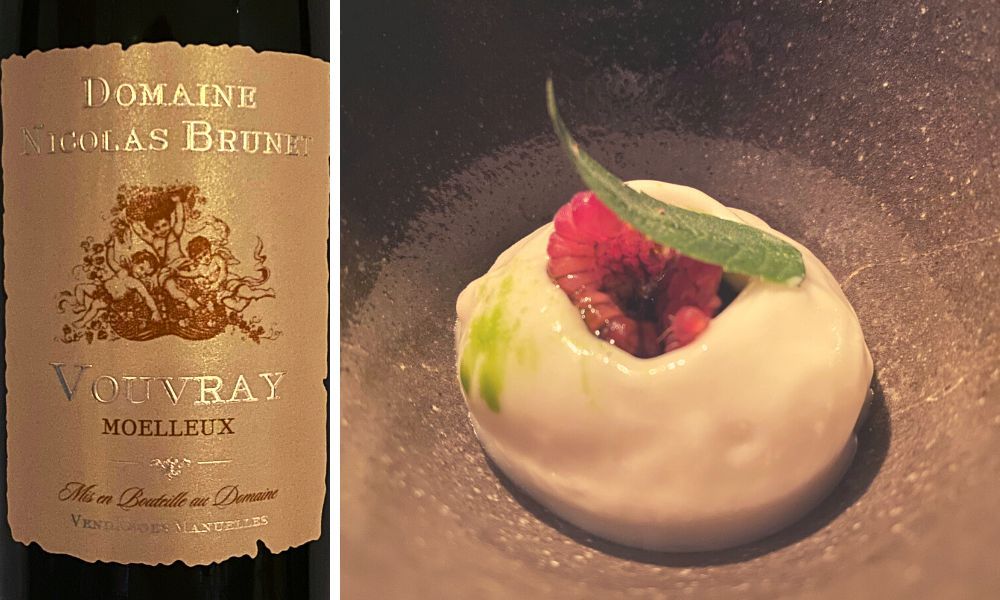
Domaine de Nicolas Brunet, Les Chappelles, 2018
Style: Sweet Vouvray
Served with Pirate Amazake, Elderflower, Husk Cherry, Lemon Verbena
Based on the hillside slopes of the village of Vouvray, the Brunet family are now in their 9th generation. 40-year-old vines on clay-limestone soils in the village of Rochecorbon over just 3.7 hectares. Natural yeasts in stainless steel at low temperature, before being stopped by chilling and racking. 67g/l residual sugar, but beautifully contrasted by mineral grip and a fresh acidic finish. Late harvest, smoke, peach melba, honey, quince, stony minerality, and a lifting basil note. Excellent contrast in this wine. Great with the dessert but I would love to try this throughout the meal. HVE Level 3 certified.
Not currently imported
For more information on the Wines of Vouvray, please contact Lucy Purkis Charters at Sopexa on lpurkis-charters@sopexa.com or head over to Vins de Vouvray
Mike Turner is a freelance writer, presenter, educator, judge and regular contributor for The Buyer through his editorial company Please Bring Me My Wine. He also runs a wine events and ecommerce business, Feel Good Grapes, that explores and discusses the idea of sustainability in the wine trade.
































